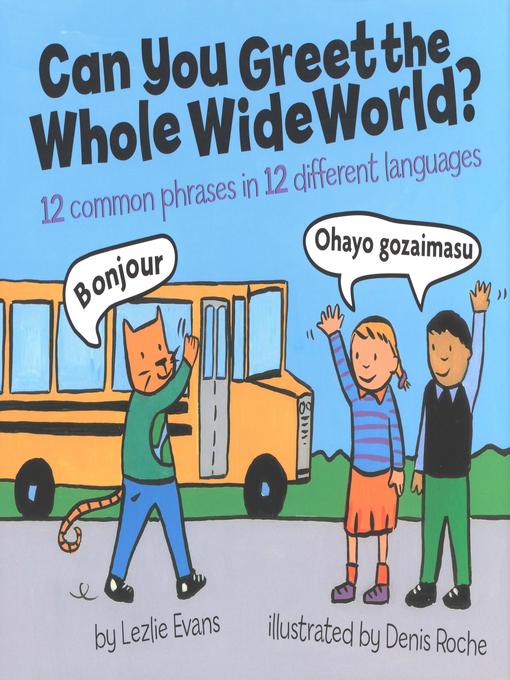You can begin the day by saying, "Good morning!" Or you could say, "Guten morgen," or "buon giorno," too. They all mean "good morning" in different languages!
In this book you can learn how to say "thank you" and "please" in Chinese and "no" in French, and "yes" in Zulu.
Twelve common phrases, twelve very different languages (German, Hebrew, Spanish, Arabic, Russian, Hindi, Chinese, Zulu, Japanese, Italian, French, and Portuguese), and one very fun book!
- Available now
- New eBook additions
- New kids additions
- New teen additions
- Most popular
- Try something different
- Indie Authors
- See all ebooks collections
- Available now
- New audiobook additions
- New kids additions
- New teen additions
- Most popular
- Try something different
- Audiobooks for the Whole Family
- Great Narrators
- Audiobooks for your Commute
- See all audiobooks collections



